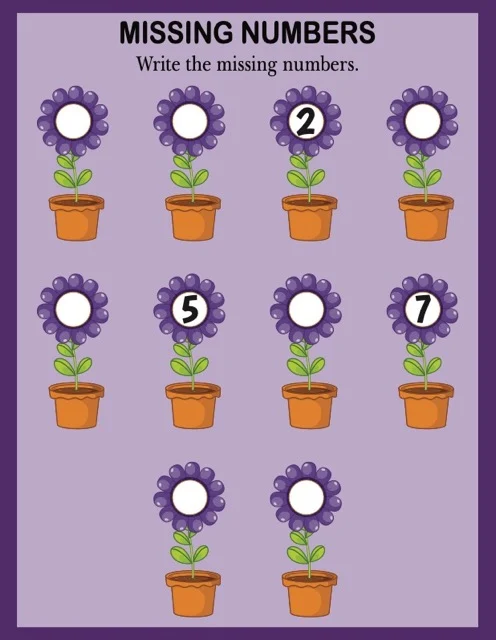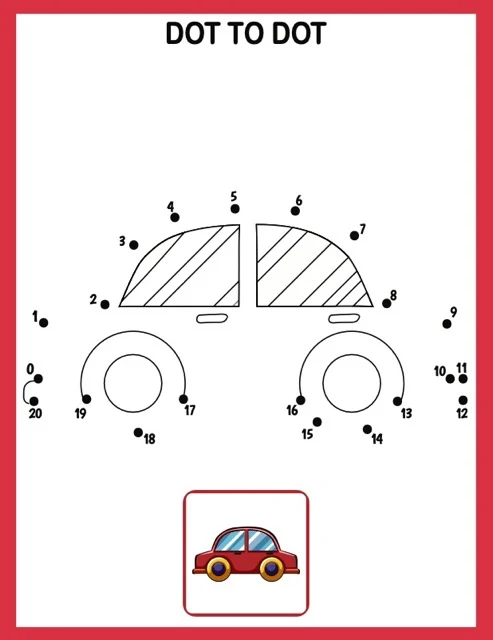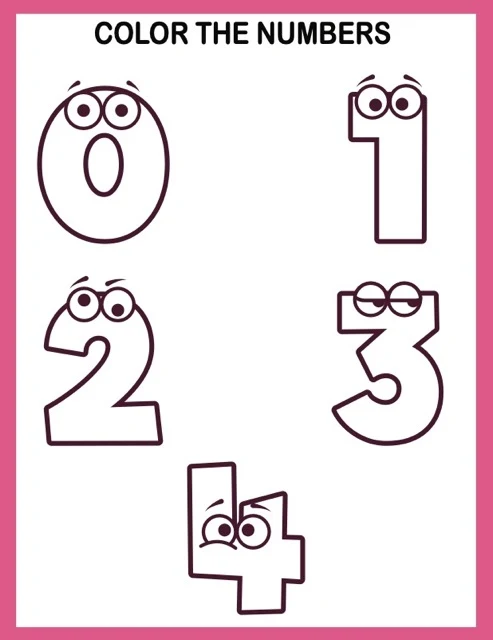Early Childhood Math: Foundations for Success
These sources detail the importance of early childhood number activities (ages 3-5) for developing foundational math skills. Engaging, hands-on activities, such as matching, tracing, and counting, are emphasized to foster understanding and build confidence. The resources highlight the adaptability of these activities to various learning styles and their use in assessment. Real-world connections are suggested to enhance learning, and the sources provide visual examples of effective activity formats. Ultimately, these materials advocate for early, varied, and engaging math instruction.
Early Childhood Number Activities
Briefing Doc: Early Childhood Number Activities
Theme: This collection of sources focuses on the importance and implementation of number activities for early childhood development, specifically for children aged 3-5.
Main Ideas/Facts:
●
Foundational Skills: Early childhood number activities aim to build essential math skills like number recognition, counting, number formation, sequencing, and simple addition/subtraction. (Source 1, FAQ 1)
●
Activity Types: These resources highlight various engaging activities, including matching, tracing, coloring, dot-to-dot, counting and circling, and multiple-choice questions. (Source 1, FAQ 2; Source 3)
●
Learning Environment: These activities are versatile and can be used for independent practice, small group work, assessment, and home learning. (Source 1, FAQ 4)
●
Benefits: Engaging, hands-on activities promote deeper understanding, improve fine motor skills, and build confidence in young learners. (Source 1, FAQ 6)
●
Adaptability: Activities can be modified to cater to different learning styles, including visual, auditory, and kinesthetic learners. (Source 1, FAQ 7; Source 2, Answers 5 & 6)
●
Assessment: Observation during these activities allows educators to evaluate children's grasp of number concepts, problem-solving, and fine motor skills. (Source 2, Answer 3)
●
Real-Life Connections: The "Study Guide" emphasizes connecting activities to real-life scenarios to enhance meaning for children. For example, simple addition can be illustrated through a child receiving an additional toy. (Source 2, Answer 10)
Important Quotes:
●
"These activities are most appropriate for preschool and kindergarten children, ages 3-5 years old. They are designed to introduce and reinforce foundational number skills." (Source 1, FAQ 3)
●
"Using engaging and hands-on activities for teaching math concepts makes learning fun and keeps children motivated. Hands-on activities also promote deeper understanding through interactive experiences." (Source 2, Answer 4)
●
"Number recognition is an important foundational skill because it forms the basis for more complex math skills." (Source 2, Answer 7)
Visual Analysis (Source 3):
The "Testing Theme: Number Activities.pdf" provides a visual example of the activities discussed in the other sources. It showcases a variety of formats including:
●
Matching numerals to quantities
●
Dot-to-dot activities for number sequencing
●
Tracing exercises for number formation
●
Counting objects and circling the correct number
●
Multiple choice questions for number recognition and simple arithmetic
●
Colorful visuals to engage young learners
Key Takeaways:
●
Early exposure to number activities is crucial for building a strong foundation in math for young children.
●
Variety and engagement are essential to cater to different learning styles and maintain interest.
●
These activities offer valuable opportunities for assessment and identifying areas for further support.
●
Connecting abstract number concepts to real-world situations helps children understand their practical application.
Further Research:
●
Explore additional resources for preschool and kindergarten math activities.
●
Investigate specific curriculum standards for early childhood math education.
●
Research the role of play-based learning in developing early math skills.
●
Examine best practices for adapting activities to diverse learning needs.
Early Childhood Number Activities
Number Activities FAQ
1. What basic number concepts do these activities cover?
These activities cover a wide range of basic number concepts, including:
●
Number recognition: Identifying and naming numbers from 0 to 10.
●
Counting: Counting objects and matching them to the correct number.
●
Number formation: Tracing and writing numbers correctly.
●
Number sequencing: Ordering numbers from least to greatest.
●
Simple addition and subtraction: Solving basic addition and subtraction problems.
2. What types of activities are included?
The activities include a variety of engaging formats, such as:
●
Matching: Connecting objects to their corresponding numbers.
●
Tracing: Practicing writing numbers.
●
Coloring: Coloring objects based on numerical instructions.
●
Dot-to-dot: Connecting dots in numerical order to reveal a picture.
●
Counting and circling: Identifying and counting specific objects within a group.
●
Multiple-choice questions: Choosing the correct answer from a set of options.
3. What age group are these activities appropriate for?
These activities are most appropriate for preschool and kindergarten children, ages 3-5 years old. They are designed to introduce and reinforce foundational number skills.
4. How can these activities be used in a learning environment?
These activities can be used in various ways:
●
Independent practice: Children can complete the activities on their own to reinforce skills.
●
Small group work: Children can collaborate and learn from each other while completing the activities.
●
Assessment: Educators can use the activities to assess children's understanding of number concepts.
●
Home learning: Parents can engage their children in these activities to support their early math development.
5. Are these activities aligned with any specific curriculum standards?
While not explicitly aligned with any specific curriculum, the activities cover concepts typically included in early childhood math standards, such as the Common Core State Standards for Mathematics.
6. What are the benefits of using these types of activities?
These activities offer numerous benefits:
●
Engaging and fun: The variety of formats keeps children interested and motivated to learn.
●
Hands-on learning: The interactive nature of the activities promotes deeper understanding.
●
Development of fine motor skills: Activities like tracing and coloring help improve fine motor control.
●
Building confidence: Success in completing these activities fosters a positive attitude towards math.
7. Can these activities be adapted for different learning styles?
Yes, the activities can be adapted to cater to various learning styles:
●
Visual learners: Benefit from the colorful visuals and concrete representations of numbers.
●
Auditory learners: Can have the instructions read aloud or listen to number songs alongside the activities.
●
Kinesthetic learners: Can use manipulatives like counters or blocks to complete some of the activities.
8. Where can I find more resources like these?
Numerous resources offer similar number activities. Search online for "preschool math activities," "kindergarten number worksheets," or visit educational websites and stores that offer printable resources.
Early Childhood Number Activities: A Study Guide
Early Childhood Number Activities: A Study Guide
Quiz
Instructions: Answer the following questions in 2-3 sentences each.
1.
List three basic number concepts covered in early childhood number activities.
2.
Describe two different types of activities that can help young children learn about numbers.
3.
Explain how early childhood number activities can be used for assessment purposes.
4.
What are two benefits of using engaging and hands-on activities for teaching math concepts?
5.
How can early childhood number activities be adapted for visual learners?
6.
How can early childhood number activities be adapted for kinesthetic learners?
7.
Why is number recognition an important foundational skill in early math development?
8.
What is number sequencing and why is it important?
9.
What is the purpose of dot-to-dot activities in early childhood math learning?
10.
Provide an example of a real-life scenario where a young child might use simple addition.
Answer Key
1.
Three basic number concepts covered in early childhood number activities include number recognition (identifying and naming numbers), counting (matching objects to corresponding numbers), and number formation (tracing and writing numbers).
2.
Two different types of activities that can help young children learn about numbers are matching activities, where children connect objects to their corresponding numbers, and tracing activities, where children practice writing numbers.
3.
Early childhood number activities can be used for assessment by observing children as they complete the activities. Educators can assess children's understanding of number concepts, problem-solving abilities, and fine motor skills.
4.
Using engaging and hands-on activities for teaching math concepts makes learning fun and keeps children motivated. Hands-on activities also promote deeper understanding through interactive experiences.
5.
Early childhood number activities can be adapted for visual learners by incorporating colorful visuals and concrete representations of numbers. Visual aids help these learners grasp abstract concepts more easily.
6.
Early childhood number activities can be adapted for kinesthetic learners by incorporating manipulatives like counters or blocks. These hands-on experiences allow children to physically interact with numbers and concepts.
7.
Number recognition is an important foundational skill because it forms the basis for more complex math skills. Children need to be able to identify and name numbers before they can count, sequence, or perform operations.
8.
Number sequencing is the ability to order numbers from least to greatest or greatest to least. It is important because it helps children understand the relationship between numbers and develop logical thinking skills.
9.
Dot-to-dot activities help children practice number sequencing and fine motor skills. By connecting dots in numerical order, children reveal a picture, making the activity engaging and rewarding.
10.
A young child might use simple addition when playing with toys. For example, if a child has two cars and receives one more, they could add the numbers together to determine they now have three cars.
Essay Questions
1.
Discuss the importance of incorporating a variety of activity formats when teaching early childhood number concepts.
2.
Explain how early childhood number activities can be used to support different learning styles and provide specific examples for each learning style (visual, auditory, and kinesthetic).
3.
Analyze the benefits and limitations of using worksheets as a primary tool for teaching early childhood number concepts.
4.
Evaluate the role of play-based learning in developing early childhood number sense and provide specific examples of play-based activities that promote mathematical thinking.
5.
Discuss the importance of connecting early childhood number activities to real-life situations and provide specific examples of how to make these connections meaningful for young children.
Glossary of Key Terms
●
Number recognition: The ability to identify and name numbers.
●
Counting: Assigning a number to each object in a set to determine the total amount.
●
Number formation: Writing numerals correctly.
●
Number sequencing: Ordering numbers in a specific order, typically from least to greatest.
●
Addition: Combining two or more numbers to find their sum.
●
Subtraction: Taking away one number from another to find the difference.
●
Manipulatives: Physical objects that can be used to represent numbers and concepts.
●
Fine motor skills: Small muscle movements, such as those used for writing and drawing.
●
Visual learners: Individuals who learn best through seeing information.
●
Auditory learners: Individuals who learn best through hearing information.
●
Kinesthetic learners: Individuals who learn best through physical activity and movement.
●
Assessment: The process of gathering information about a student's learning.
●
Play-based learning: An approach to learning that emphasizes exploration, creativity, and hands-on experiences.
●
Number sense: A general understanding of numbers and their relationships.





































